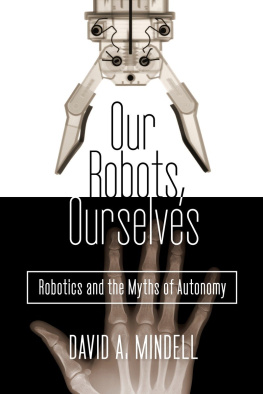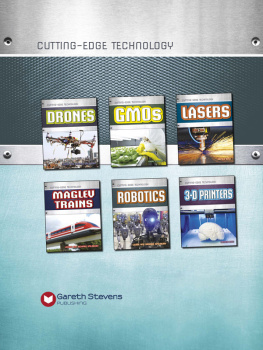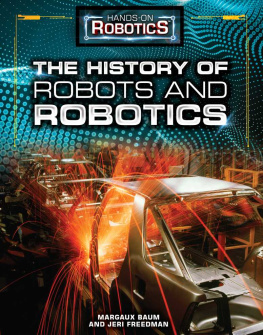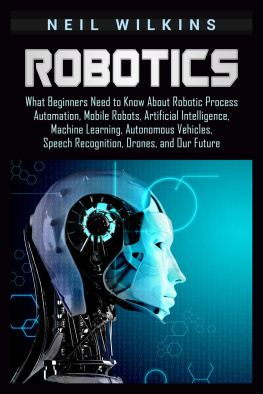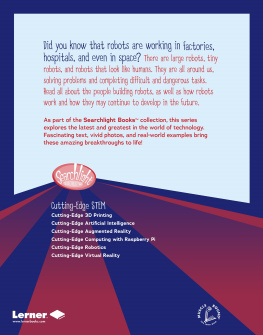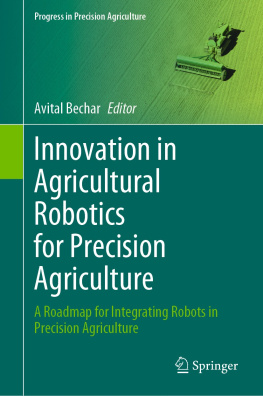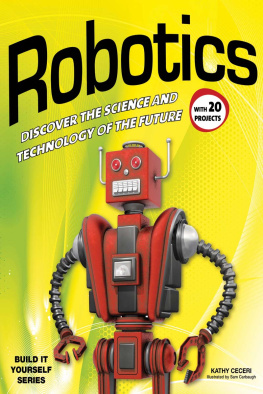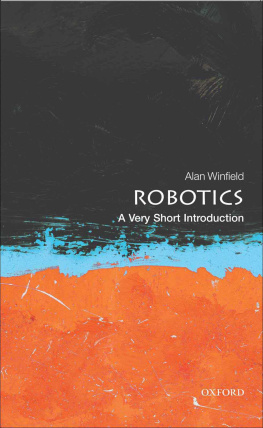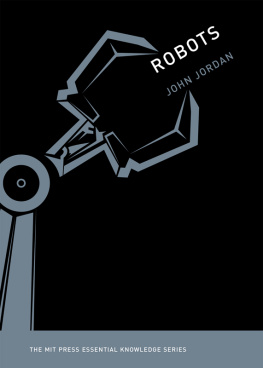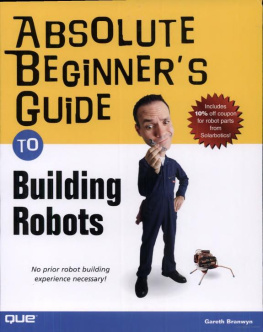ALSO BY DAVID A. MINDELL
Copyright 2015 by David A. Mindell
Penguin supports copyright. Copyright fuels creativity, encourages diverse voices, promotes free speech, and creates a vibrant culture. Thank you for buying an authorized edition of this book and for complying with copyright laws by not reproducing, scanning, or distributing any part of it in any form without permission. You are supporting writers and allowing Penguin to continue to publish books for every reader.
Poetry is the journal of a sea animal living on land, wanting to fly in the air.
CHAPTER 1
Human, Remote, Autonomous
LATE IN THE NIGHT, HIGH ABOVE THE ATLANTIC OCEAN IN THE LONG, OPEN STRETCH between Brazil and Africa, an airliner encountered rough weather. Ice clogged the small tubes on the aircrafts nose that detected airspeed and transmitted the data to the computers flying the plane. The computers could have continued flying without the information, but they had been told by their programmers that they could not.
The automated, fly-by-wire system gave up, turned itself off, and handed control to the human pilots in the cockpit: thirty-two-year-old Pierre Cedric Bonin and thirty-seven-year-old David Robert. Bonin and Robert, both relaxed and a little fatigued, were caught by surprise, suddenly responsible for hand flying a large airliner at high altitude in bad weather at night. It is a challenging task under the best of circumstances, and one they had not handled recently. Their captain, fifty-eight-year-old Marc Debois, was off duty back in the cabin. They had to waste precious attention to summon him.
Even though the aircraft was flying straight and level when the computers tripped off, the pilots struggled to make sense of the bad air data. One man pulled back, the other pushed forward on his control stick. They continued straight and level for about a minute, then lost control.
On June 1, 2009, Air France flight 447 spiraled into the ocean, killing more than two hundred passengers and crew. It disappeared below the waves, nearly without a trace.
In the global, interconnected system of international aviation, it is unacceptable for an airliner to simply disappear. A massive, coordinated search followed. In just a few days traces of flight 447 were located on the oceans surface. Finding the bulk of the wreckage, however, and the black box data recorders that held the keys to the accidents causes, required hunting across a vast seafloor, and proved frustratingly slow.
More than two years later, two miles deep on the seafloor, nearly beneath the very spot where the airliner hit the ocean, an autonomous underwater vehicle, or AUV, called Remus 6000 glided quietly through the darkness and extreme pressure. Moving at just faster than a human walking pace, the torpedo-shaped robot maintained a precise altitude of about two hundred feet off the bottom, a position at which its ultrasonic scanning sonar returns the sharpest images. As the sonars pinged to about a half mile out either side, the robot collected gigabytes of data from the echoes.
The terrain is mountainous, so the seafloor rose quickly. Despite its intelligence, the robot occasionally bumped into the bottom, mostly without injury. Three such robots worked in a coordinated dance: two searched underwater at any given time, while a third one rested on a surface ship in a three-hour pit stop with its human handlers to offload data, charge batteries, and take on new search plans.
On the ship, a team of twelve engineers from the Woods Hole Oceanographic Institution, including leader Mike Purcell, who spearheaded the design and development of the searching vehicles, worked in twelve-hour shifts, busy as any pit crew. When a vehicle came to the surface, it took about forty-five minutes for the engineers to download the data it collected into a computer, then an additional half hour to process those data to enable a quick, preliminary scroll-through on a screen.
Looking over their shoulders were French and German investigators, and representatives from Air France. The mood was calculating and deliberate, but tense: the stakes were high for French national pride, for the airliners manufacturer, Airbus, and for the safety of all air travel. Several prior expeditions had tried and failed. In France, Brazil, and around the world, families awaited word.
Interpreting sonar data requires subtle judgment not easily left solely to a computer. Purcell and his engineers relied on years of experience. On their screens, they reviewed miles and miles of rocky reflections alternating with smooth bottom. The pattern went on for five days before the monotony broke: a crowd of fragments appeared, then a debris fielda strong signal of human-made artifacts in the ocean desert. Suggestive, but still not definitive.
The engineers reprogrammed the vehicles to return to the debris and fly back and forth across it, this time close enough that onboard lights and cameras could take pictures from about thirty feet off the bottom. When the vehicles brought the images back to the surface, engineers and investigators recognized the debris and had their answer: they had found the wreckage of flight 447, gravesite of hundreds.
Soon, another team returned with a different kind of robot, a remotely operated vehicle (ROV), a heavy-lift vehicle specially designed for deep salvage, connected by a cable to the ship. Using the maps created by the successful search, the ROV located the airliners black box voice and data recorders and brought them to the surface. The doomed pilots last minutes were recovered from the ocean, and investigators could now reconstruct the fatal confusion aboard the automated airliner. The ROV then set about the grim task of retrieving human remains.
The Air France 447 crash and recovery linked advanced automation and robotics across two extreme environments: the high atmosphere and the deep sea. The aircraft plunged into the ocean because of failures in human interaction with automated systems; the wreckage was then discovered by humans operating remote and autonomous robots.
While the words (and their commonly perceived meanings) suggest that automated and autonomous systems are self-acting, in both cases the failure or success of the systems derived not from the machines or the humans operating on their own, but from people and machines operating together. Human pilots struggled to fly an aircraft that had been automated for greater safety and reliability; networks of ships, satellites, and floating buoys helped pinpoint locations; engineers interpreted and acted on data produced by robots. Automated and autonomous vehicles constantly returned to their human makers for information, energy, and guidance.
Air France 447 made tragically clear that as we constantly adapt to and reshape our surroundings, we are also remaking ourselves. How could pilots have become so dependent on computers that they flew a perfectly good airliner into the sea? What becomes of the human roles in activities like transportation, exploration, and warfare when more and more of the critical tasks seem to be done by machines?

